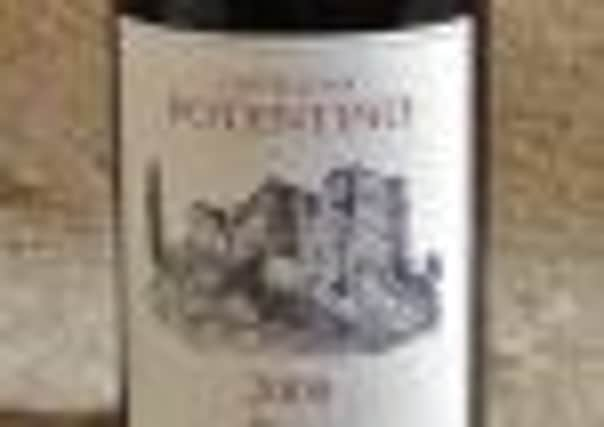Wine: An English family are making wine magic in a heavenly spot in Tuscany


I am here to meet an English family, the Greenes, who are making waves on the Italian wine scene by successfully planting unusual grapes in this secret valley where they have made their home.
“They call this the Golden Basin,” says Alexander Greene. “It is so much cooler at night and more fertile than the Orcia valley on the other side of Mount Amiata. Here we grow cool climate pinot noir, while just over the mountain grapes get scorched.”
Advertisement
Hide AdAdvertisement
Hide AdAlexander Greene and his sister Charlotte Horton, an oenologist, discovered this valley in the late 1990s. The Greenes have lived in Tuscany for 30 years. In 1999 they sold their first restored castle, Montepo in the Maremma, nearer the Tuscan coast, to well-known Jacobo Biondi Santi of Brunello di Montalcino wine fame, so they wanted a new project.
“We discovered a dilapidated 10th-century ruin, Castello di Potentino, in an old guidebook,” says Greene. “It was complicated for us to buy it as we had to deal with 19 different families; I guess that is why no-one else had bothered before.”
Having secured ownership of the crumbling medieval fortress, the first thing they did – even before installing heating in the castle – was to put a cantina (wine cellar) in the old stables and plant a vineyard around the castle walls.
“I tasted local wines and they reminded me of pinot noir,” says Horton. “When I came to visit, we were here late; an enormous moon came out and very cold air from Amiata came flowing into the valley – it was clear that pinot noir was a grape we should grow.”
Now her vines are 12 years old, she has been proven right; the grapes are expressing real character from mineral-rich volcanic soils. Englishwoman Horton is winning plaudits from top Italians (the likes of Guida dell’Espresso).
Her cellar is small and neat, with just six vats and an old wooden hand press, which she prefers as it gives her wines with more precise tannins. She has discovered an old Etruscan trough and pre-phylloxera vines nearby. She is now experimenting with foot treading and ancient methods.
Horton makes three reds: Sacromonte (pure sangiovese), Piropo (pinot noir) and Balaxus (grenache-sangiovese). Now she has raised Tuscan eyebrows again with a new white wine, Lyncurio, made from red grape pinot noir. As a keen lover of champagne, she was interested to see if she could make a decent still white from pinot noir – as the Champenoise do – in Tuscany. It is certainly one of the more unusual Italian whites I have tasted.
You can stay at Potentino (for bed and breakfast) – but if you don’t make it to Italy, you can experience Potentino elsewhere. The Greenes’ latest venture, Pop Up Potentino, recreates their food and wine in other settings.
Advertisement
Hide AdAdvertisement
Hide AdSo if you fancy enjoying Piropo or Sacromonte with their local recipes of pasta with Bottarga pesto, Fave e Fagiole or chocolate pots with lavender and Potentino’s deliciously peppery olive oil, they are planning a Pop Up Potentino in Edinburgh soon.
WHITE
LYNCURIO PINOT NERO BIANCO 2010
(£14.75, www.fromvineyardsdirect.com)
An unusual blanc de noirs: nutty, citric, rich, fleshy, mouthfilling fruits with high natural acidity – an impressive first effort considering its origin.
REDS
SACROMONTE SANGIOVESE 2005
(£11.95, www.fromvineyards direct.com)
Sinewy, savoury, herby and spicy with a velvet mouthfeel – a great value mature sangiovese.
SACROMONTE SANGIOVESE 2007
(£13, www.fromvineyardsdirect.com)
Very ripe forward fruits, intense, rich, lovely rounded flavours, hefty but well-integrated alcohol, lovely length.
PIROPO PINOT NOIR 2008
(£13.95, www.fromvineyards direct.com)
Aromatic, earthy notes, herby undertones, pronounced acidity – this is the first vintage made from just pinot noir.